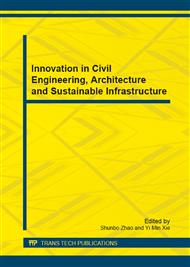p.838
p.844
p.848
p.852
p.856
p.860
p.864
p.868
p.872
Comparative Analysis on Liquefaction Macro-Characteristics of the Three Major Regions in Wenchuan Earthquake
Abstract:
Through the liquefaction-induced damage of Wenchuan earthquake investigation analysis, this paper studies that the liquefaction features and distribution of the three major liquefied regions in Wenchuan earthquake and the earthquake liquefied damage characteristics are preliminarily comparatively analyzed. The analytical results show that: Mianyang region, Deyang region and Chengdu region are the three major liquefaction affected regions in Wenchuan earthquake. Deyang region is the most serious liquefied region, Chengdu region is the second, and Mianyang region is the lightest. Liquefaction damage was considerably large, and basically was farmland. Liquefied sites mainly concentrated in intensities VIII in Deyang region, the categories of sand ejecta were abundant, and the percentage of gravel ejecta is largest in the three major liquefied regions. Liquefied sites mainly located in intensities VII in Chengdu region, and the sand ejecta covered many sand categories, including fine (silty) sand, medium sand, coarse sand and gravely sand. The liquefaction and relevant damage of Mianyang region were the lightest in the three major liquefied regions, and liquefied sites mainly located in intensities VII. 80% of the sand ejecta were fine-silty sand while coarse sand ejection was not found.
Info:
Periodical:
Pages:
856-859
Citation:
Online since:
November 2012
Authors:
Keywords:
Price:
Сopyright:
© 2012 Trans Tech Publications Ltd. All Rights Reserved
Share:
Citation:


